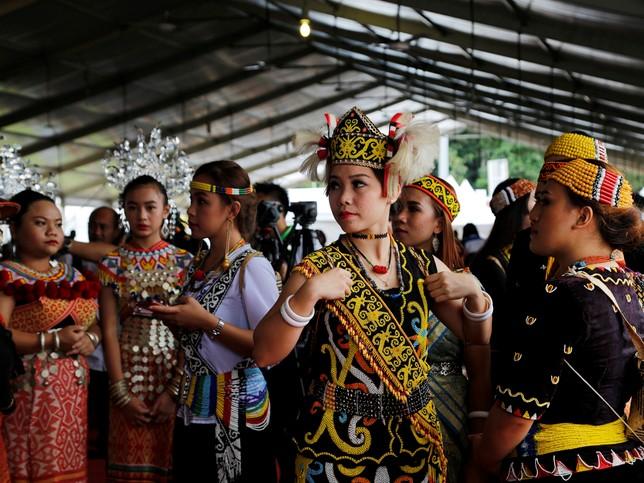
Recognising First Nations through place: creating an inclusive university environment

University campuses in Australia are located on stolen and unceded land. Australia’s First Nations people have an ontological and epistemological connection to land, having maintained a strong sense of interdependence, identity and spirituality with Country. “Country” is a term commonly used by First Nation Australians to describe the land, waterways, seas and sky to which they are connected.
The built environments of Australian universities reflect violence and dispossession through invasion and colonisation. It is in this environment of dismissal of their sovereignty that First Nations students and staff are expected to grow and thrive.
- Can we really decolonise the university?
- Decolonisation to Indigenisation: how can institutions centre Indigenous knowledge?
- How to be an anti-racist ally on the university campus
The complete physical dominance of the land by Australian university campuses, particularly those in inner cities, obscures Traditional Owners’ boundaries and cultural rights, including the rights of reciprocity that place obligations on people entering, staying in and leaving Country.
How discrimination affects physical environments
The systemic discrimination that exists in core university policies also affects place; the physical environment in universities is seen as neutral, which allows for institutions’ impact to go unnoticed. This is the case even where the buildings were designed and erected during what the Australian hegemony calls the colonisation period, from 1788 to 1901, a period that ended 70 years before Aboriginal people were included in the Australian census.
An example of colonisation’s physical presence on a university campus is the location of Old Government House, which was the inaugural building for the University of Queensland but is now a centrepiece on Queensland University of Technology’s (QUT) Gardens Point campus in Brisbane. Old Government House was home to Queensland governors from the early 1860s to 1910 and was the site where the most oppressive piece of legislation for Queensland Aboriginal and Torres Strait Islands people was assented, the Aboriginal Protection and Restriction of the Sale of Opium Act 1897 (Qld); it was later replaced by the Aboriginals Preservation and Protection Act, 1939. This act provided the government with legal control over the lives of Aboriginal and Torres Strait Islander people.
In 1978 Old Government House was the first building to be protected by heritage legislation in Queensland due to its heritage values, while the many Aboriginal homes, cultural sites and important walking paths in the same vicinity were destroyed and buried under new colonial structures. Subsequently, where many university students see “old” buildings on their journeys through campuses, First Nations students may see colonisation and oppression, destruction and disregard for their culture and history.
In 2019, in recognition of its shared history and the impact of the physical campus on First Nations students, staff and community visitors, QUT worked with its newly appointed First Nations Elder-in-Residence, its First Nations deputy vice-chancellor (Indigenous Australians) and a First Nations architect to develop a strategy that would recognise and reflect the culture and history of local traditional owners, the Yugara and Turrbal people. The strategy had to reflect not only what was there before colonisation but how it could be using First Nations perspectives in design. In 2020, QUT launched Campus to Country, a positioning strategy that recognised the significance and presence of the Yugara and Turrbal.
In the development of a university strategy for the physical environment, it is important to recognise that campuses stand on the land of specific Traditional Owners. This means a complex process of recognition of the Traditional Owners, their neighbouring and historical connection communities, and the First Nations staff and students who study and work on campus. The term “community” is commonly used by First Nations Australians to denote a specific population of First Nations people or peoples.
This recognition provides an understanding that Australian First Nations people are not a homogenous group but have differing ontological and epistemological connections to differing lands. The acknowledgement ensures that the underlying stories of Traditional Owners become the basis for visible markers of First Nations people on campus.
Considering First Nations’ history and perspectives
To transform physical campuses into places that embrace and welcome First Nations people, a shift is required beyond the Western lens and interpretation of place to consider First Nations’ history and perspectives in design and use of Country. In a practical sense, this could be the development of a strategy that overlays university master plans ensuring that principles frame development and provide guidance for the delivery of future campus projects. It must include projects focused on speaking back to existing buildings, particularly those that reflect colonisation, segregation and discrimination.
A key element of any strategy focusing on First Nations people who are and/or have been subject to invasion and colonisation and ongoing discrimination is to create dedicated safe cultural spaces based on their specific needs. The second element is to ensure that the wider campus is inclusive, comfortable and welcoming. Small actions can have an impact; for example, an underground oven used for ceremonies can be used by both First Nations Australians and other people, providing for a cultural need with the wider campus environment; or a First Nations Elders garden surrounded by native plants can give all students who use it a place for quiet contemplation or study.
Such a strategy can have multiple outcomes. It creates a welcoming place for First Nations people that affirms their culture and identity; it allows for universities to be sites of truth-telling; and it provides access to First Nations’ knowledges, for all students and staff, through recognising and respecting knowledge that is embedded in “place”.
To quote an old proverb: “What has been seen cannot be unseen.” In this context what is seen in the built environment at university campuses cannot be unseen by First Nations students, staff or community visitors. Universities, as places of social good and inclusive education, have a responsibility to create environments that nurture and support learning of First Nations people. More than that, as a learning institution, they have an obligation to reflect on their own practice and physical environment to ensure they do not reproduce or mirror the dispossession and dismissing of First Nations people.
Angela Leitch (Woppaburra Gaumi Enkil) is deputy vice-chancellor (Indigenous Australians) at Queensland University of Technology.
If you would like advice and insight from academics and university staff delivered direct to your inbox each week, sign up for the Campus newsletter.
Additional Links
For more resources on this topic, see our spotlight on Indigenous voices in higher education.


